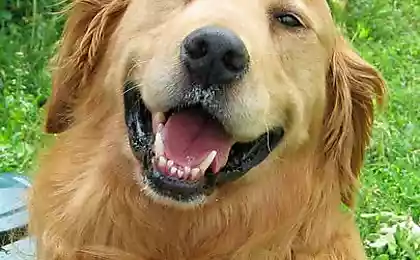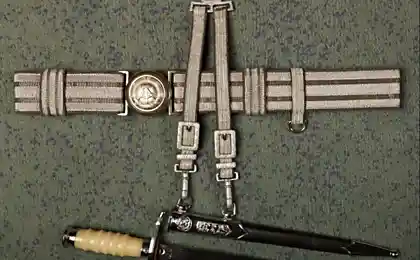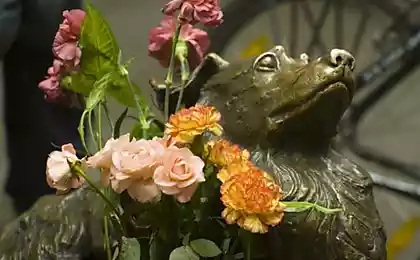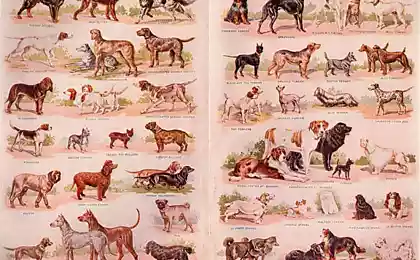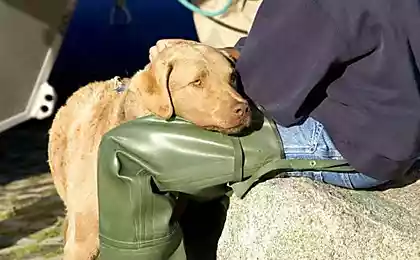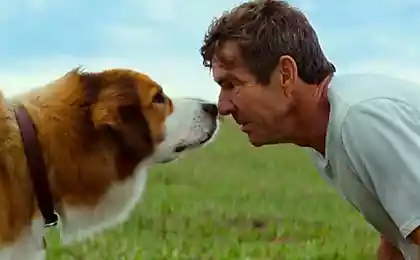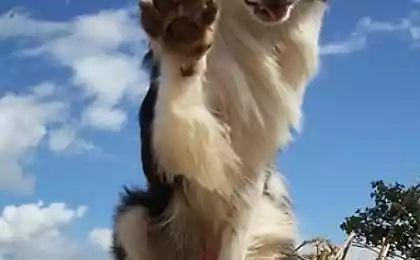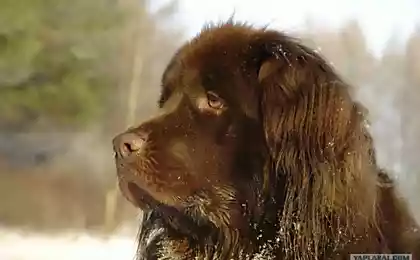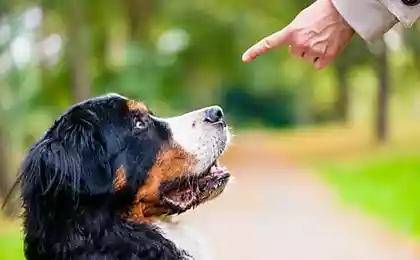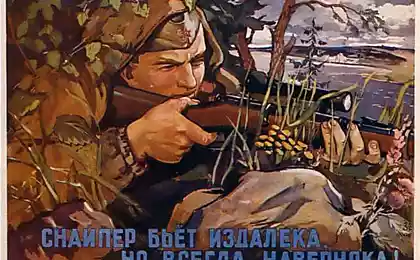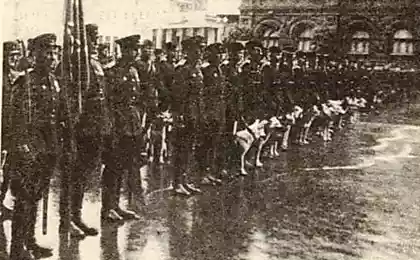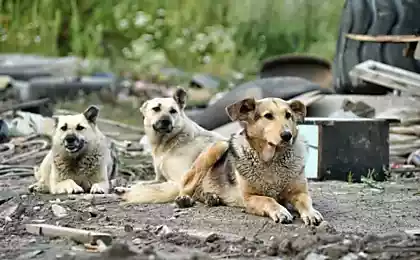624
Dogs barabaki or unusual 43 Infantry
Few people know that dogs barabaki actually existed.
For those who do not believe - a brief history of 43 Infantry Regiment (Infanterie-Regiment "Herzog Karl von Mecklenburg-Strelitz" (6. Ostpreussisches) Nr. 43), or rather his musical chapel ...
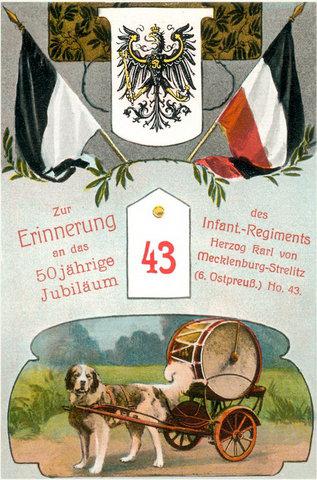
The 43rd Infantry Regiment there was one distinguishing feature - a special musical Chapel, with its famous "drum dogs" or "dog kettledrummer."
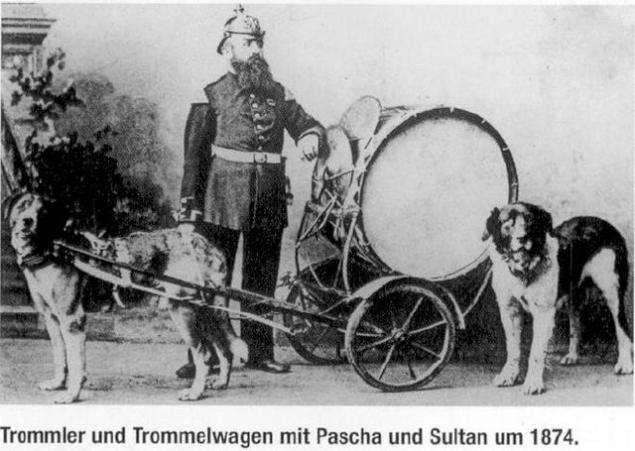
The tradition of all this came from Austria. Regimental Band of the Austrian Emperor and his Majesty's 77th Infantry Regiment was one of the royal Bernardino (sernbernara) harnessed to a cart with a large drum.
At the Battle of Sadova (or Kёniggretse - July 3, 1866) of the 43rd Infantry Regiment captured a drum wagon of the Austrian 77th Infantry Regiment.
She pulled a St. Bernard named Sultan. The drum in the wagon was covered in holes from bullets and shrapnel.
= According to another version: the capture of the baggage dog named Sultan lying shot near the carts. And in the grand entrance of the regiment in Königsberg was involved only captured a wagon with timpani. =
When Prussian troops enter Koenigsberg, dog with dignity dragged wagon "shot" drum, attracted the attention of the townspeople.
And March 9, 1867 the regiment received the highest resolution roll them "in perpetuity." Since then, the 43 th Regiment bred their own Sultans (another version of the name - Pasha), and this symbol was called "Dog kettledrummer" or "Regimental dog».
Luxury St. Bernards, took place in the shelf on the allowance, harnessed to a cart with a large drum. And it was measured, decorous, with full awareness of the important mission assigned to them. On the neck of the dog servicemen certainly flaunted sergeants braid.
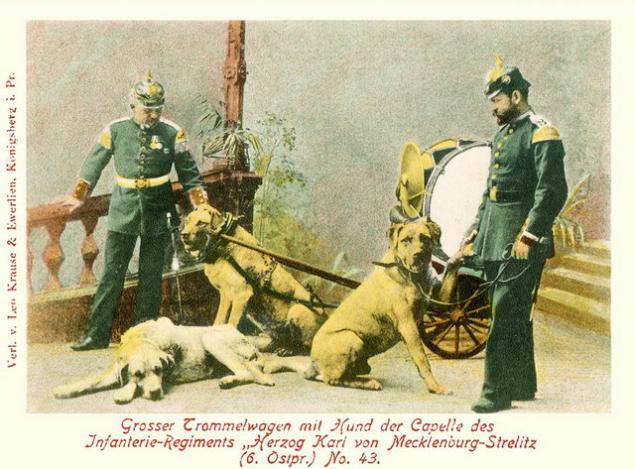
In all the parades, as well as the procession of the castle guard dog traditionally perceived by the public to cheer.
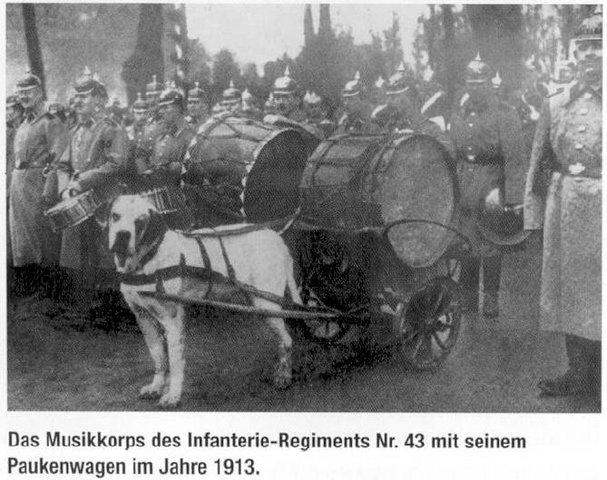
This made popular with the regiment kenigsberzhtsev with cart and dog was one of the bestselling motif on postcards.
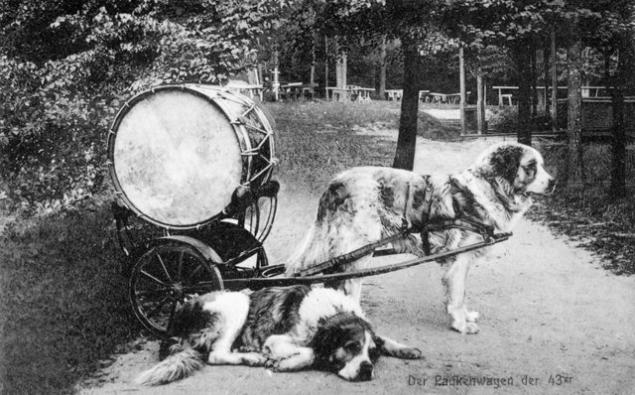
08/30/1914 at the Battle of Tannenberg "drum dog" Pasha almost fell into Russian captivity, but the sergeant-major Fritz Purvyne, risking his life to save a friend from the enemy fire.
Pasha served until 1919, and then retired, living out your dog's age in the estate of a former officer of the regiment.
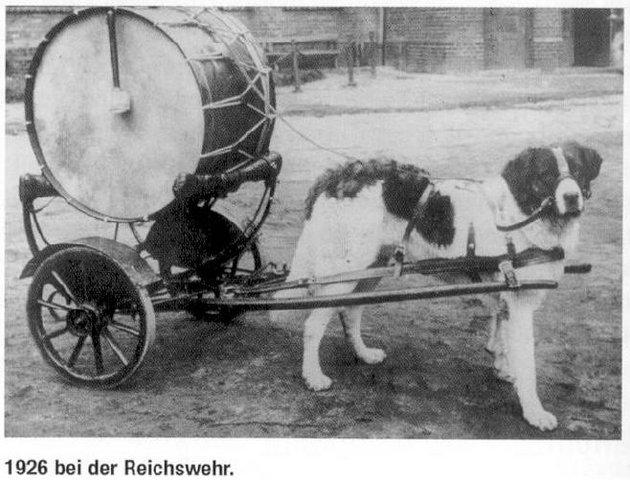
In the formation of the Reichswehr "drum dogs" revived - in 1924. Colonel-General Hans von Seekt unique tradition passed the 43rd Regiment of II Battalion of the 1st Infantry Regiment. The wagon was found in the museum, and the new Infantry Regiment presented the magnificent St. Bernard. This first dog was involved in the exercises, then - in the Polish campaign of 1939, then - he remained in Koenigsberg, where in April 1945, held in her sergeant shot her and then shot himself.
via mebius777
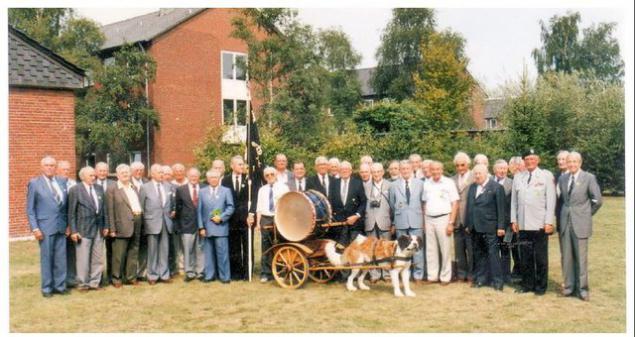
Source:
For those who do not believe - a brief history of 43 Infantry Regiment (Infanterie-Regiment "Herzog Karl von Mecklenburg-Strelitz" (6. Ostpreussisches) Nr. 43), or rather his musical chapel ...

The 43rd Infantry Regiment there was one distinguishing feature - a special musical Chapel, with its famous "drum dogs" or "dog kettledrummer."

The tradition of all this came from Austria. Regimental Band of the Austrian Emperor and his Majesty's 77th Infantry Regiment was one of the royal Bernardino (sernbernara) harnessed to a cart with a large drum.
At the Battle of Sadova (or Kёniggretse - July 3, 1866) of the 43rd Infantry Regiment captured a drum wagon of the Austrian 77th Infantry Regiment.
She pulled a St. Bernard named Sultan. The drum in the wagon was covered in holes from bullets and shrapnel.
= According to another version: the capture of the baggage dog named Sultan lying shot near the carts. And in the grand entrance of the regiment in Königsberg was involved only captured a wagon with timpani. =
When Prussian troops enter Koenigsberg, dog with dignity dragged wagon "shot" drum, attracted the attention of the townspeople.
And March 9, 1867 the regiment received the highest resolution roll them "in perpetuity." Since then, the 43 th Regiment bred their own Sultans (another version of the name - Pasha), and this symbol was called "Dog kettledrummer" or "Regimental dog».
Luxury St. Bernards, took place in the shelf on the allowance, harnessed to a cart with a large drum. And it was measured, decorous, with full awareness of the important mission assigned to them. On the neck of the dog servicemen certainly flaunted sergeants braid.

In all the parades, as well as the procession of the castle guard dog traditionally perceived by the public to cheer.

This made popular with the regiment kenigsberzhtsev with cart and dog was one of the bestselling motif on postcards.

08/30/1914 at the Battle of Tannenberg "drum dog" Pasha almost fell into Russian captivity, but the sergeant-major Fritz Purvyne, risking his life to save a friend from the enemy fire.
Pasha served until 1919, and then retired, living out your dog's age in the estate of a former officer of the regiment.

In the formation of the Reichswehr "drum dogs" revived - in 1924. Colonel-General Hans von Seekt unique tradition passed the 43rd Regiment of II Battalion of the 1st Infantry Regiment. The wagon was found in the museum, and the new Infantry Regiment presented the magnificent St. Bernard. This first dog was involved in the exercises, then - in the Polish campaign of 1939, then - he remained in Koenigsberg, where in April 1945, held in her sergeant shot her and then shot himself.
via mebius777

Source:
